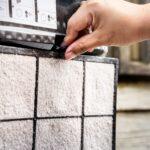Are you trying to decide if you should invest in an indoor air quality system for your home? If so, you’re like a lot of our customers today. With viruses and environmental concerns always in the news, everyone is trying to sort what’s worth their attention – and their hard-earned money – from what’s not.
Regarding the quality of the air we breathe, that falls into the “worth it” camp.
It’s almost too obvious to state, but you’re breathing all day, every day. What’s in your air greatly impacts your quality of life.
And an indoor air quality system greatly impacts what’s in your air.
For this reason, an indoor air quality system is indeed worth the investment for most homeowners. It guarantees fresh, clean air in your home. And fresh, clean air is vital to your physical, mental, and financial health.
In this post, we’ll provide the details on why an indoor air quality system is so critical, and not merely a “nice-to-have.”
We’ll also explain what we mean by “indoor air quality system,” because it can refer to one or more types of indoor air quality products. Frequently, these various products work together to form an indoor air quality system. The kind of system that best suits you depends on your home and your needs.
Let’s get started!
Six reasons why an indoor air quality system may be worthwhile for you:
Here’s the whole list up front. Click the item you’re interested in to learn more, or just keep reading!
An indoor air quality system makes financial sense.
You get more fresh air without changing your routine.
You can improve your physical and mental health.
An indoor air quality system complements new and renovated homes.
An indoor air quality system counteracts extreme temperatures and extreme temperature changes.
1. An indoor air quality system makes financial sense.
Owning a home is expensive, and growing more so every day. So despite any health benefits that you may be looking for from an indoor air quality system, your first consideration might be its cost.
We’re excited to put your mind at ease here. An indoor air quality system is a sound investment in two ways:
- It’s affordable. The purchase and installation costs of an indoor air quality system are typically less than those of your HVAC system. In fact, they are often a fraction of the costs of your HVAC system. Your specific costs depend on the particular air quality system you choose and the size and condition of your home. But the general rule of affordability applies to most customers.
- It reduces your energy bills. Better indoor air quality helps your HVAC system run more efficiently and last longer. You’ll see the gain in efficiency reflected in lower energy bills and fewer HVAC repairs. In fact, the U.S. Environmental Protection Agency found that a ventilation upgrade alone can generate an annual energy savings of 10% to 21%. This kind of savings also allows you to recoup your purchase and installation costs.
As you can see, an indoor air quality system really doesn’t deserve its reputation as a luxury item. It is actually a smart long-term investment.
Plus, it is usually quick to install. A typical indoor air quality system is a half-day installation. Occasionally it requires a full day if your ductwork needs some upgrades.
With financial (and potential hassle) concerns out of the way, everything else is gravy. But let’s get to it!
2. You get more fresh air without changing your routine.
A fact of modern life is that we live it mostly inside, whether that’s at home, school, or the office. On average, we spend about 90% of our time indoors, where pollutants can be two to five times higher than they are outdoors.
That means that most of the time, we’re breathing stale, indoor air.
An indoor air quality system changes this for you.
Of course, regularly opening windows helps too, but it only scratches the surface.
Regular window-opening can be a challenge in a climate like Pittsburgh’s, where we keep our windows closed all winter to stay warm and all summer to stay cool.
Plus, at work and at school, we often can’t open windows at all. At home, we simply can’t open them often enough for continuous, daily air exchanges – meaning the regular replacement of old indoor air with new outside air.
The gold standard for residential air exchanges is .35 per hour, or one full air exchange every three hours. An indoor air quality system implements this standard in your home, whereas even an Olympic window-opening team couldn’t implement it manually for more than a few consecutive days.
Now, are you obligated to implement the gold standard of air exchanges in your home? No. But if you’ve experienced any of the following, you might not be getting enough fresh air:
- Drowsiness or fatigue
- Nausea
- Headache
- Dizziness
- Eye, nose, or throat irritation
- Mental strain, like difficulty concentrating
- Mental health struggles, like irritability and even anxiety or depression
An indoor air quality system can provide relief from these symptoms. But obviously, other factors could be at play, so if you or someone in your household suffers from any of them, you should consult your doctor as well.
3. You can improve your physical and mental health.
There’s far more to fresh air than the absence of negative effects.
There are also positive effects. And they’re pretty compelling.
Many homeowners who install an indoor air quality system experience an “I didn’t know how much better I’d feel” effect. This is because continuous fresh air in your home brings in more oxygen, which does the following:
- Increases your alertness and focus.
- Helps clear your nasal passages and lungs.
- Helps lower your blood pressure and heart rate.
- Aids your digestion.
- Improves the quality of your sleep.
- Promotes faster healing.
These kinds of benefits are particularly noticeable – and important – when there are older or medically vulnerable people in your home, or if you’re an older homeowner yourself. While an indoor air quality system is no substitute for your health regimen, it is a powerful addition to all the things you do to stay healthy.
4. An indoor air quality system complements new and renovated homes.
New home-building technologies are fantastic. Except when they’re not.
For instance, sometimes they solve a problem too well. New home technologies have created “tight house syndrome” – the term for a home that is insulated and sealed so securely that fresh air cannot circulate in it.
Here’s the deal: insulation and sealants now do their jobs so effectively that they block fresh air from entering your home. They also block toxins (like those from building materials, furnishings, cleaning supplies, and other sources) from escaping your home.
In our work, we say a house like this “can’t breathe.” It can’t get anything close to the recommended full air exchange every three hours.
Here are some signs that your home is suffering from tight house syndrome:
- You experience any of the physical or mental health symptoms noted earlier.
- Stale or unpleasant odors linger a long time.
- Condensation accumulates on window panes.
- Dampness or mold invades, or floors and finishes start to buckle (these indicate trapped moisture).
- Static electricity shocks you frequently, or floors and paint start to crack (these indicate excessively dry air).
When you’ve handed over your wallet, time, energy, and sweat equity to build or renovate your home, you don’t want to damage it or jeopardize your health with poor ventilation. Likely your builder recommended that you consider an indoor air quality system as part of your construction project. We do too.
5. An indoor air quality system counteracts extreme temperatures and extreme temperature changes.
In 2021, the coldest day in Pittsburgh was 2°F, and the hottest day in Pittsburgh was 92°F.
A 90-degree difference? Yep, that’s an area with extreme temperature changes.
(By the way, these local temperatures for the record-keeping books are taken at Pittsburgh International Airport. Shout out to the airport area, which we happily serve. But we digress!)
When year after year brings extreme weather fluctuations, punishing temperatures, and periods of high humidity followed by periods of dryness, you and your home pay the toll over time:
- Constant expansion and contraction degrade the structure of your home and furnishings.
- Persistent moisture promotes the growth of mold mildew.
- Persistent dryness exacerbates colds, flu, and allergies.
- An overburdened HVAC system consumes vast amounts of energy to maintain a consistent indoor temperature in the face of severe outdoor elements.
For people who live in these kinds of areas, then, an indoor air quality system is absolutely worthwhile. It delivers the air consistency that nature doesn’t, protecting and maintaining your home in the process.
6. You’re probably ingesting pollutants you don’t want.
Our environment is filled with pollutants. But your home doesn’t have to be.
So far in this post, we’ve been talking mostly about fresh air – air that is exchanged frequently and has a balanced level of humidity.
However, quality air is not just fresh air but clean air. Clean air is free of toxins that can cause infections and disease.
An indoor air quality system sanitizes the air in your home, nearly eliminating airborne contaminants including:
- Germs like viruses, bacteria, mold, and mildew.
- Allergens like pollen, pet dander, and dust.
- Pollutants like smoke, soot, traffic exhaust, and industrial emissions.
- Harmful gases like radon and carbon monoxide.
- Volatile organic compounds (VOCs) like formaldehyde, benzene, and ethanol, which are found in many household items, building materials, and personal care products.
Almost all homes contain some combination of these airborne contaminants. One of the most interesting indoor pollution studies in recent years was conducted in Austin, Texas. A team of researchers placed a network of air quality sensors inside a 1,200 square-foot manufactured home and proceeded to live there for a month. They did typical daily activities like cooking and cleaning, using typical products. They even cooked a traditional Thanksgiving dinner.
At the end of the month, they found that the indoor air quality in the home was equivalent to that of a polluted major city.
And speaking of polluted major cities, Pittsburgh has come a long way since our smoky, steel-town days. Our city is gorgeous and growing cleaner every year. But we still have a ways go: the Pittsburgh metro ranks ninth in the nation for year-round particle pollution, which puts 2.5 million of us, particularly children and seniors, at risk for lung disease, according to the American Lung Association. So an indoor air quality system is worthwhile for homeowners here.
What is an “indoor air quality system”?
Now that you know why an indoor air quality system is worth it, let’s describe what it actually is.
There’s a lot of terminology in the field of indoor air quality, which you’ve probably noticed. It can be confusing, because “air quality” refers to multiple characteristics (like freshness and cleanliness), and because achieving these characteristics in your home’s air can involve multiple products.
Let’s break it down!
An indoor air quality system isn’t a single product. Rather, it’s a solution that can contain multiple products.
Following is a list of products that we commonly recommend as part of an indoor air quality system.
Keep in mind that you likely won’t need all of these! The size and type of your home, along with the goals you’re looking to achieve with your air, will determine which products are best for you.
Air filters
Air filters trap particulates in the air. There are many types of air filters, including the standard fiberglass ones that you may already use, and hopefully replace regularly, as part of your HVAC system.
There are also media filters that are thicker, more deeply pleated, and more effective than standard filters. These can be made of charcoal or other naturally filtering materials. There are also electric and UV light filters.
HEPA (High Efficiency Particulate Air) filters are those that can remove at least 99.97% of airborne particles down to a size of 0.3 microns.
The primary consideration when deciding among filter varieties is the MERV (Minimum Efficiency Reporting Value) rating. This rating reports the ability of a filter to capture particles. For residential filters, the MERV rating ranges from one to 16. The higher the rating, the more effective the filter.
We’re happy to talk filters with you, and help you replace them regularly, which is really important for the quality of your air and the performance of your HVAC system.
Energy Recovery Ventilators (ERVs)
An ERV introduces optimal airflow into your home. It delivers continuous daily air exchanges, so it is always replacing old indoor air with fresh outdoor air.
Further, an ERV treats the air it brings in. It recovers the heat from your old air and applies it to the new air so that you’re conserving energy rather than throwing it away. So an ERV:
- Infuses your home with fresh, tempered air all day long.
- Reduces the burden on your HVAC system, which otherwise must do all the work of tempering air on its own.
- Makes your home more energy-efficient, and thus more environmentally friendly.
ERVs are especially ideal for new homes with high-tech insulation that hinders airflow, as we discussed earlier.
One of the ERV brands we like is RenewAire, but there are many ventilation options. We’re always available to guide you through them.
Air Purifiers
Whereas air filters trap airborne particulates, air purifiers actually sanitize your air. Air purifiers capture and neutralize the contaminants that escape filters, such as gases, vapors, and viruses.
Air purifiers and ERVs work well together: ERVs bring in fresh outdoor air, and air purifiers sanitize that air so it’s free of outdoor pollutants.
There are many air purifiers on the market, including portable ones for specific areas of your home, and ones that target specific types of pollutants, like smoke or allergens.
For whole-home, all-around air purification, one of the best products we’ve found is the Lennox PureAir system. It tackles every type of airborne contaminant, including SARS-CoV-2, the virus that causes COVID-19. This way, you don’t have to choose which toxin to combat, or cobble together multiple air purification products.
Air purifiers are especially important if you’re not getting air exchanges in your home. But again, we’re here to help you determine the best way to get the fresh, clean air you need.
Humidifiers and Dehumidifiers
A quality HVAC system, along with good filtration and ventilation, goes a long way toward balancing the humidity levels in your home.
But sometimes, indoor moisture or the lack thereof – or both – requires an indoor air quality product that targets humidity specifically.
For example, many Pittsburgh residents struggle with a damp basement – or worse, recurring mold – which can often be treated and prevented with a dehumidifier.
Many other Pittsburghers suffer with respiratory ailments all winter long, thanks to an overly dry house. In these cases, a humidifier can work wonders in keeping homeowners healthier during cold and flu season.
If humidity or dryness is an issue in your home, we can work with you to achieve an ideal moisture balance all year long by installing a whole-home humidifier or dehumidifier.
_____________
We hope we’ve helped answer the question of whether an indoor air quality solution is worthwhile for you. Or at least we hope we’ve aided your research in this area.
If you like, you can learn more about our air quality services, about our team, and about how we work. And then contact us! We’re thrilled to have an air quality conversation that takes your unique home, family, budget, and concerns into account. We look forward to it!





